Spot
I was cycling up First Avenue and came across a giant statue of a Dalmatian balancing a New York City taxi cab on its nose in front of NYU Children’s Hospital’s new Kimmel Pavilion on 34th Street.

The giant 30-foot statue, Spot, was unveiled in 2018. The taxi cab is a real Prius donated by Toyota. It was stripped of its motor, but when it rains, the windshield wipers actually work!

The statue was designed to give kids and their families an emotional boost when they arrived at the hospital.
Spot got me wondering if there were other statues of dogs on display in public spaces in New York.
Balto
Of course, the first Google search result of “dog statues” in the Big Apple will return “Balto the Sled Dog in Central Park.”
Balto is a favorite in the park. His statue has been located west of East Drive and 67th Street and north of the Children’s Zoo since 1925.
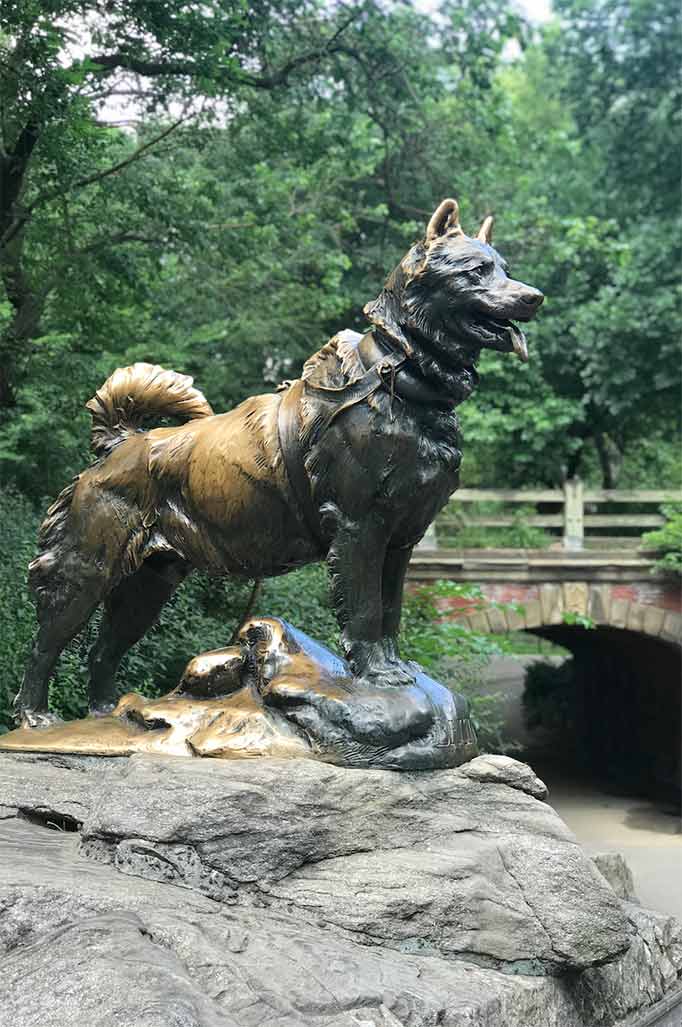
In the 1920s, Nome, Alaska suffered a terrible diphtheria outbreak. Teams of mushers and sled dogs — led by Balto and others — battled blizzard conditions over nearly 700 miles to deliver medicine to the stricken town. Brooklyn-born sculptor Frederick George Richard Roth created this tribute to the heroic dog.
Togo
And just who were those “others” involved in the rescue of Nome? Well, one of them was Togo. Balto’s owner had other sled dogs, including Togo, his favorite. It turns out that Togo did most of the heavy lifting (or should I say pulling?) during the nearly 700 mile run. Balto, however, led the last leg as they entered Nome. That’s why he got the hero’s welcome!
Did Togo get a statue in New York City?
He did, but it had an ignominious beginning. The anonymous figure you see below by Shelley Curtis Smith was tucked away in sad little Seward Park in the Lower East Side.
In the dirt.
By a fence.
Where few people could see it.
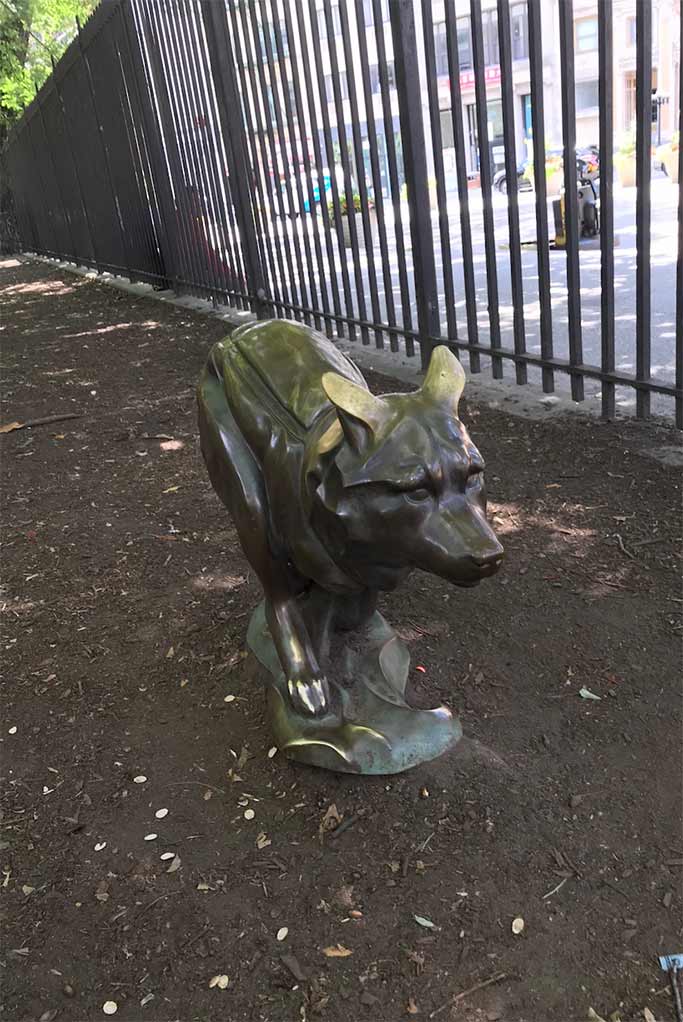
Fortunately, Togo’s reputation has undergone a rehabilitation recently! Time Magazine named him the most heroic animal of all time. Disney made a live action film that tells his story! It stars Willem Dafoe and it is available on Disney+.
And his statue in Seward Park has been given a plaque and was moved to a more visible place of honor among some benches where people can enjoy his company.
For the full story on Togo’s rise to new-found fame, click here.
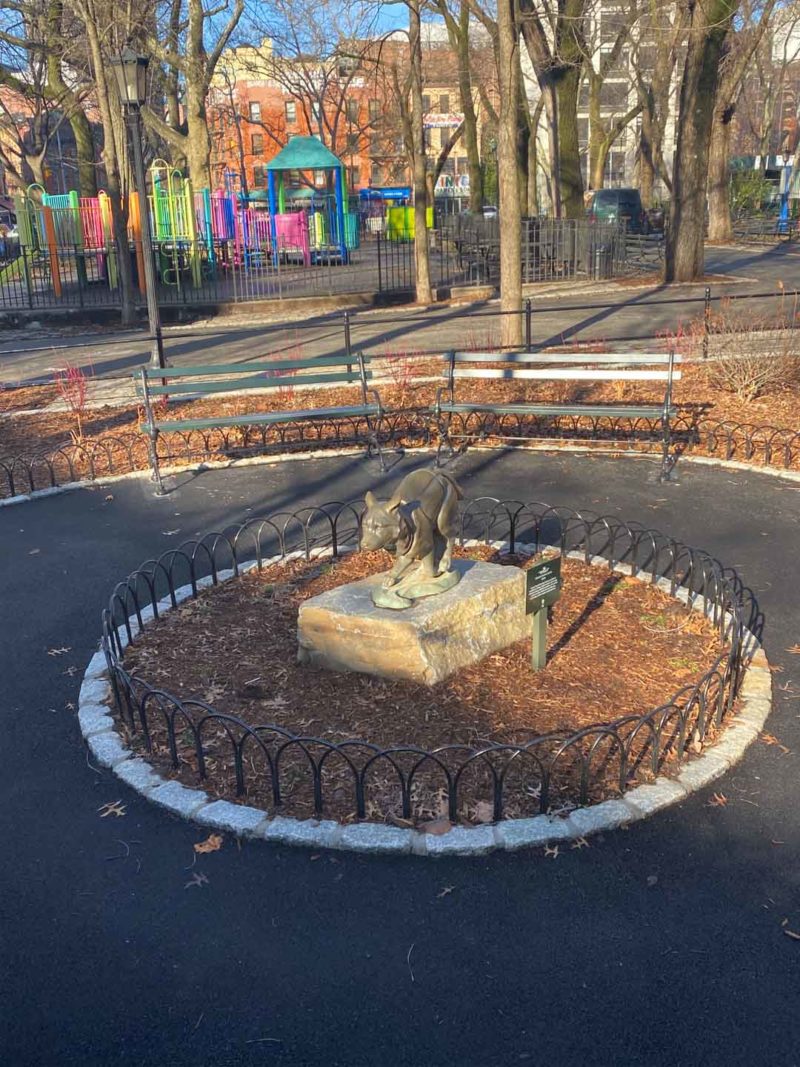
Paparazzi Dogs
After checking out Balto and Togo, I remembered I’d seen the Paparazzi Dogs in a square in Greenwhich Village about a year ago. I cycled down to the Village only to find they were gone. I emailed the artists, husband and wife team Gillie and Marc, in Australia. They told me there were several of their works on display throughout the city including some Paparazzi Dogs in the lobby of 75 Rockefeller Plaza.
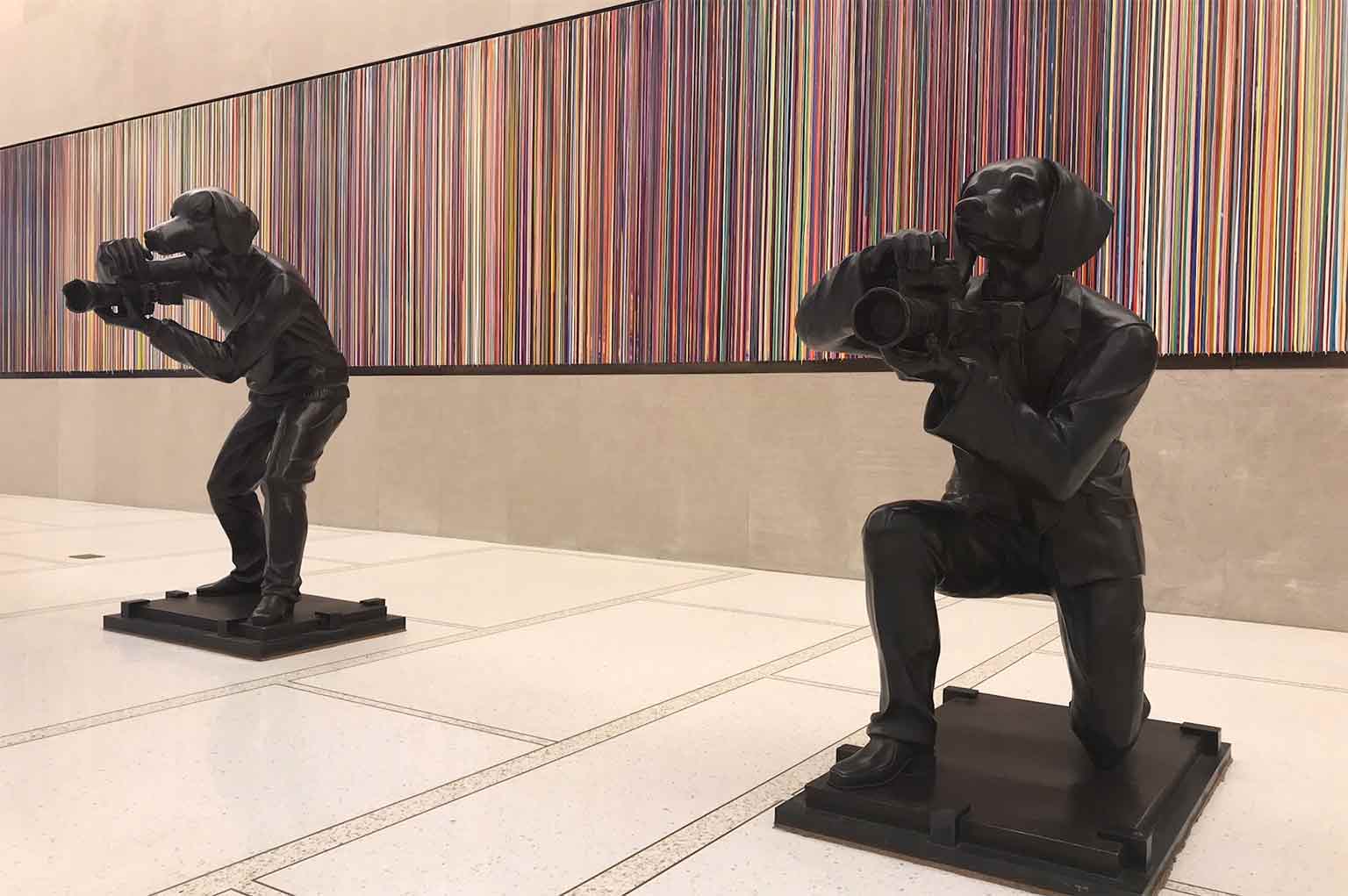
Gillie and Marc were embroiled in a controversy a few years back. A statue they created featuring a Dogman holding a big red apple, to be displayed in Chinatown, was met with opposition from the community. Locals used the city not to install the work saying that an image of a man with a dog’s head was insulting. Eventually the statue made its way to Melbourne, Australia.
Here’s a photo of the dogs when they were stationed in Greenwich Village.

Raymond and Toby
I was wandering around Astoria recently (as one will) and came across the Socrates Sculpture Park where I found this statue of Raymond and Toby by John Ahearn.
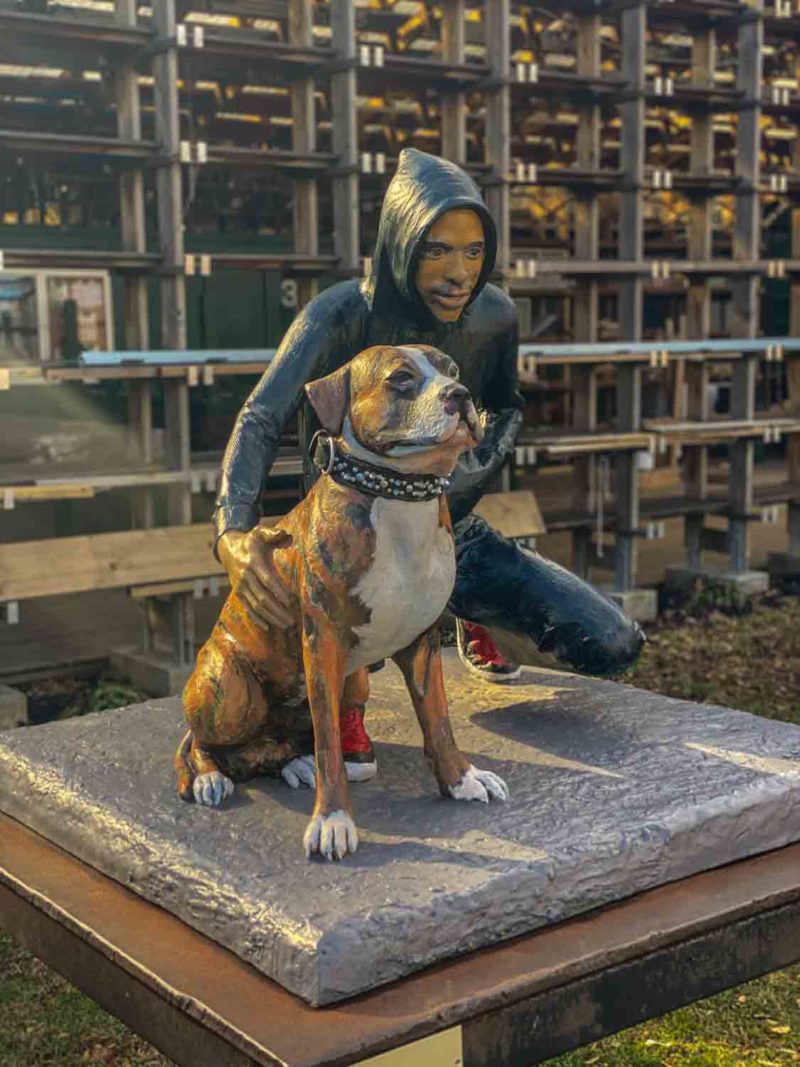
Ahearn is known for his street art.
Figure Balancing on Dog
I took the Water Taxi to the Wall Street area recently where I came across a dog statue by Keith Haring.
Haring was a prominent artist in New York City from the late 1970s to 1990, when he died of AIDS. His popularity grew from the chalk drawings he made in city subways of various types of figures, including dogs. You can see one example below, Dancing, Barking Dogs. The barking dog motif was one he used many times in his work.

Over the course of his short career, he created numerous public works, several featuring the barking dog motif, including this one, Figure Balancing on Dog, at 17 State Street in lower Manhattan.
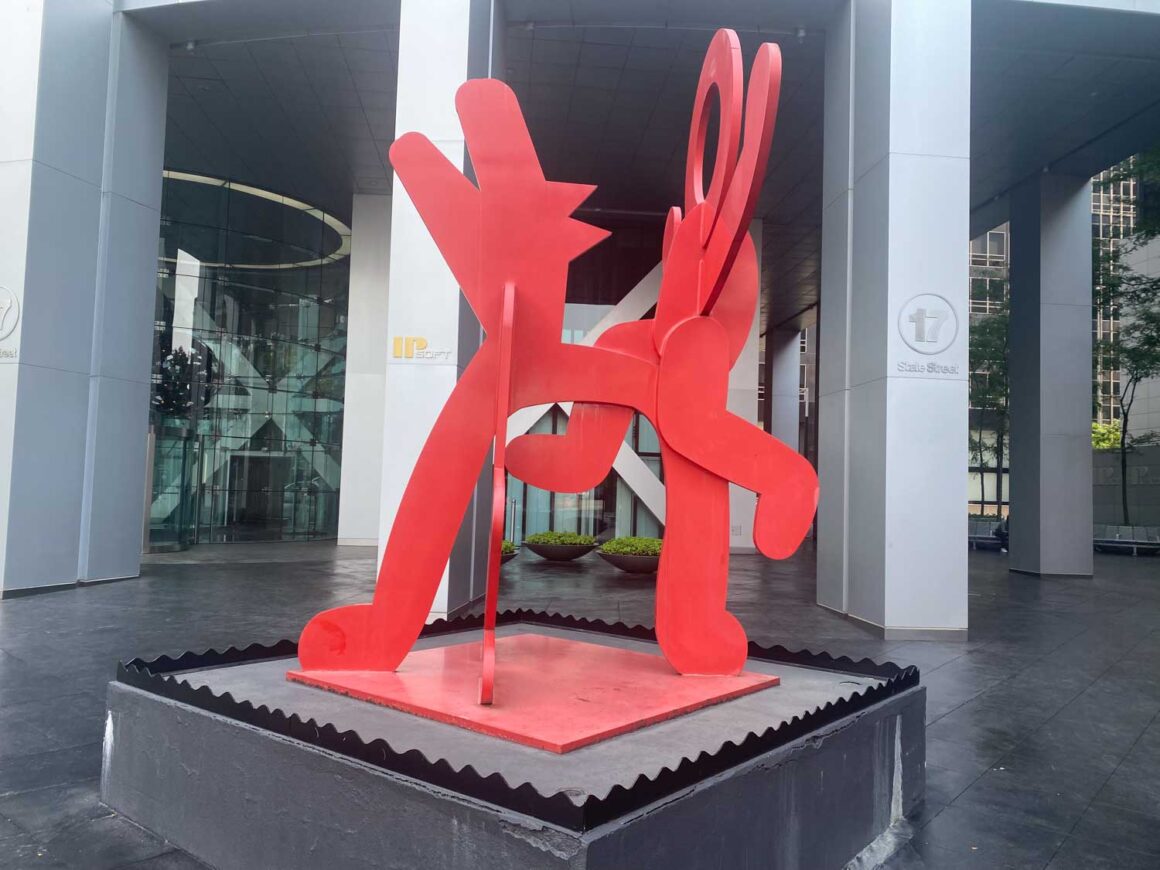
Rex
I went bird watching recently in the Green-Wood Cemetery in Brooklyn and happened across this bronze statute of a dog named Rex. (And yes, I became a bird watcher during the pandemic. Sue me. I’m a cliche!)
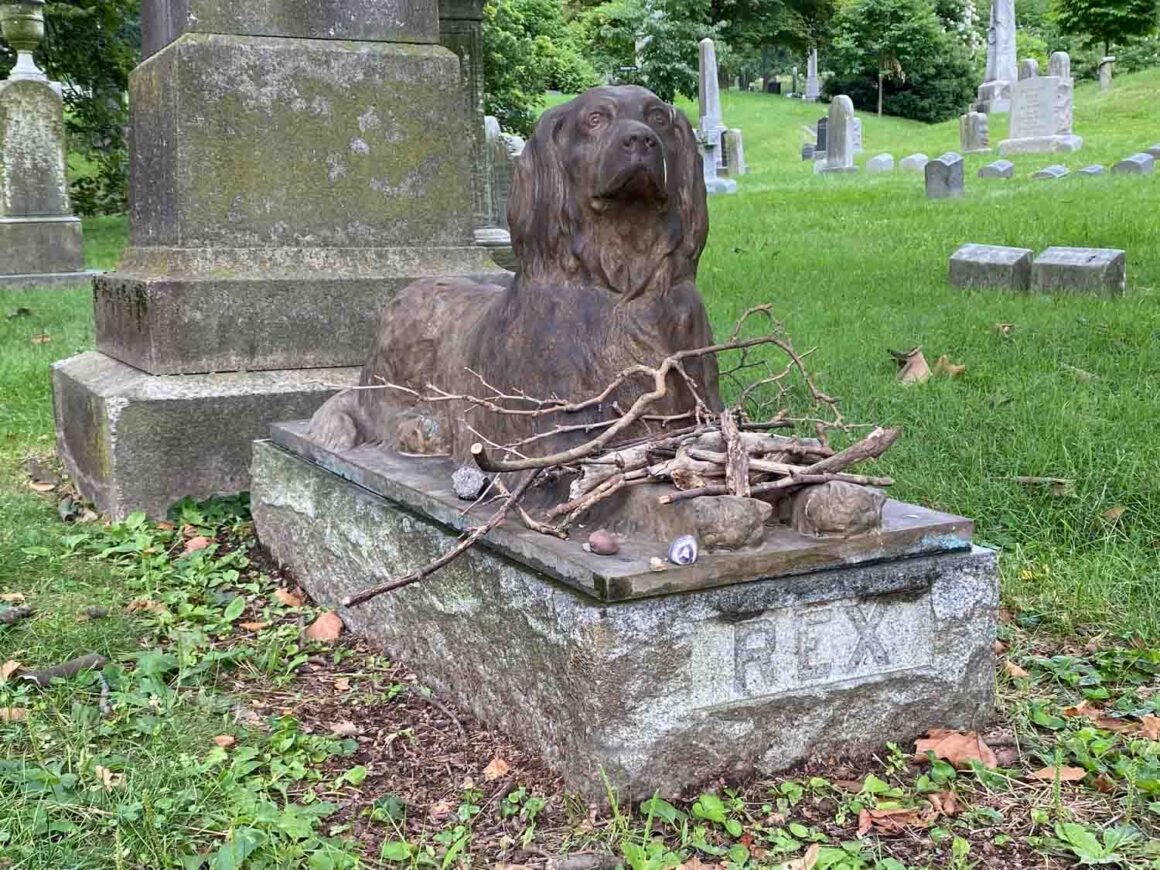
Rex has guarded over John E. Stow’s plot for more than 100 years. Stowe, a prominent fruit merchant, was born in England in 1817 and died in Brooklyn in 1884. It’s not known whether Rex is actually buried with Stowe.
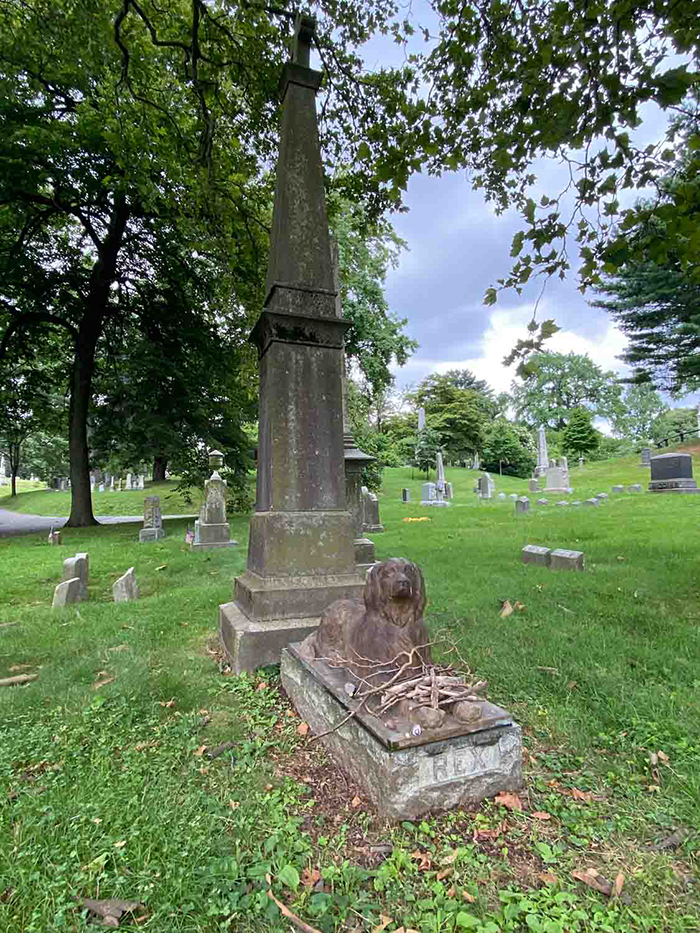
For years now people have collected sticks and left them at Rex’s paws because that’s what every Good Boy wants: a stick to chew on. I left that big twisty branch you see leaning against his neck.
Rex is located at Lot 2925 in Section 81. It’s kind of easy to find, but I recommend asking someone on the cemetery staff to give you directions.
The Real World
Including the work of Tom Otterness is something I have been going back and forth about since I posted the first version of this story on dog statues in New York City a few years ago. I finally decided to do a little journalism and tell Otterness’ story and engage in a little editorializing as well.
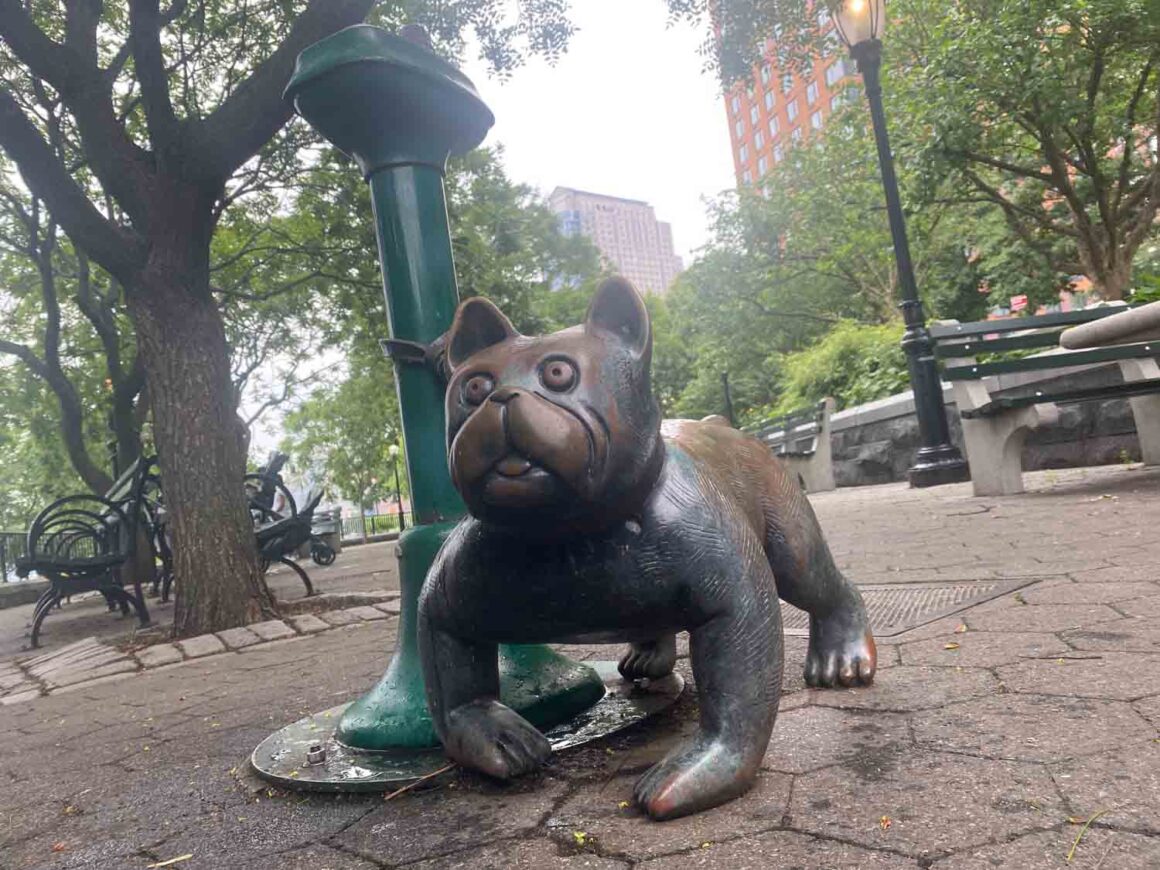
His work is definitely charming. The cute French Bulldog above is part of a grouping of statues that comprise a larger installation called The Real World. It is located in Nelson Rockefeller State Park in Battery Park City in lower Manhattan.
In the image below you’ll see the Frenchie is tied to a water fountain… he’s got his eye on a cat… the cat’s stalking a bird… and the bird is after a worm. (For some reason a little figure of a man is hugging the worm.)

Otterness has another installation in the subway station at 14th Street and 8th Avenue in Chelsea. The little statues there are equally cute.
After I did a little research on Otterness I discovered he did a pretty reprehensible thing back in the 1970s when he was a young artist. He adopted a shelter dog and shot it dead for an “art film” he called Shot Dog Film. Click here for an essay on the Artsy website entitled When Does Avant Garde Go Too Far?
Once the existence of this film resurfaced later in Otterness’ career he encountered protests against his work. Otterness apologized in 2008 saying: “As you must understand this is a very difficult and painful situation for me. Thirty years ago when I was 25 years old, I made a film in which I shot a dog. It was an indefensible act that I am deeply sorry for. Many of us have experienced profound emotional turmoil and despair. Few have made the mistake I made. I hope people can find it in their hearts to forgive me.”
A lot of people, including me, don’t really buy the apology.
One Brooklyn artist even created his own version of an Otterness piece and installed it along with the 14th Street statues to call attention to the artist’s hypocrisy. (It was quickly removed.)

I realize people do stupid things, but I have a hard time saying that killing a dog for the sake of art qualifies as a “stupid thing.” I think it’s pretty horrible.
Others may accept Otterness’ apology and say that people change over time.
I have no problem with private individuals buying his work if they want, I just don’t want my tax dollars funding public installations by him.






